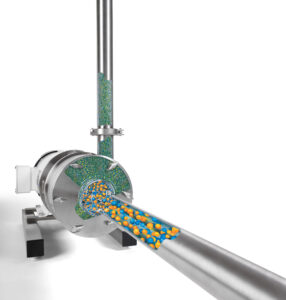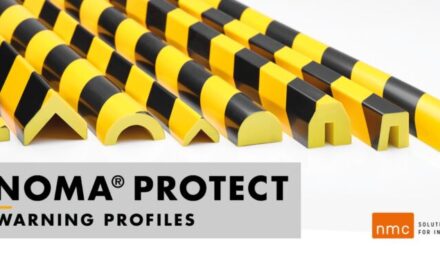 When mixing continuously in larger batches, In-Line mixing is often the method chosen by manufacturers to get the best results; it also offers greater energy efficiency over in-tank mixers as the mixer’s effort is concentrated on a small volume in the mixing chamber rather than having to circulate the entire volume in the tank. But, these results are dependent on the type of In-Line mixer being utilised, with each type having its advantages and disadvantages. In this article, Silverson Machines explores the pros and cons of the following types of In-Line mixers:
When mixing continuously in larger batches, In-Line mixing is often the method chosen by manufacturers to get the best results; it also offers greater energy efficiency over in-tank mixers as the mixer’s effort is concentrated on a small volume in the mixing chamber rather than having to circulate the entire volume in the tank. But, these results are dependent on the type of In-Line mixer being utilised, with each type having its advantages and disadvantages. In this article, Silverson Machines explores the pros and cons of the following types of In-Line mixers:
- Static mixers
- In-Line Agitators
- Colloid Mills
- High Pressure Homogenisers
- High Shear In-Line rotor/stator mixers
Static In-Line Mixers
These units have no moving parts and consist simply of a section of pipe with internal baffling, the design is dependent on the manufacturer and can vary widely. The baffling in the section of pipework creates flow diversions which disrupt the flow of movement along the pipework and ensure blending of the mixture.
Static In-Line mixers are ideal for liquid/liquid blending, where both liquids are of a similar low viscosity. They are not suitable for forming emulsions or disintegrating particle size as the baffles do not generate any shear energy. These mixers must also be used in conjunction with a feed pump in order to move the mixture through the pipework and into the vessel.
In-Line Agitators
This type of mixer can also be known as a propeller or turbine mixer, which are again mounted within a pipeline. They work in a very similar way to static In-Line mixers and therefore have similar advantages and disadvantages.
Colloid Mills
A colloid mill is a type of rotor/stator mixer which has a mechanism to vary the clearance between the rotor and stator components, allowing the user better control of the shear rates and retention time. These adjustable shear rates can be beneficial to those with shear sensitive ingredients in their formulations, those producing viscous emulsions and for fine de-agglomerating.
These mills always require additional pumping assistance and because of their high energy they are limited in flow capacity. Even the largest colloid mills have can only pass a few hundred litres per minute. The low throughput leads to longer mixing times and a higher energy requirement adding to costs. These mills are also difficult to clean and are high maintenance.
High Shear In-Line rotor/stator Mixers
One of the most versatile mixers on the market, high shear rotor/stator In-Line mixers have the ability to form stable emulsions, de-agglomerate, reduce particle and droplet sizes and blend powdered and liquid ingredients. These self-pumping mixers consist of a high-speed rotor turning with close clearance inside a fixed stator. This workhead is impossible to bypass so all material is subjected to high shear as it passes through the workhead. They have a higher flow rate than some of the other options discussed with a standard Silverson In-Line mixer able to process up to 200,000 litres per hour. This rate may be slower for more viscous products, but Silverson also offers a High Viscosity In-Line mixer with a special ‘pumping’ rotor for processing high viscosities. The HV In-Line does not require an additional feed pump and can process products such as Mayonnaise and gels.
While rotor/stator mixers can generally achieve a particle or droplet size in the range of 2 – microns, or finer depending on the ingredient type and formulation, where sub-micron particle or droplet size is required a High Pressure Homogeniser would normally be used.
High Pressure Homogenisers
High pressure homogenisers are powerful devices that use a piston pump to force the product through a very small adjustable aperture at high pressure. The combination of turbulence, cavitation and impact means the product is subjected to intense energy forces. As such, high pressure homogenisers are the best option for creating sub-micron particle sizes. However, for the majority of products, sub-micron size isn’t actually required for a functional product, so using high pressure homogenisation in these applications is not cost effective, as this type of mixer is costly to purchase and to run because of its energy requirement. High pressure homogenisers can also struggle when fed product which is not of a uniform particle size and this can lead to longer processing times, further increasing costs.
It is clear that each type of In-Line mixer has its place in the processing industry, But for manufacturers with more than one mixing application, particularly more complex tasks such as forming emulsions, hydrating gums and thickeners and reducing particle size, high shear In-Line mixers may be the best solution in terms of efficiency, versatility and ensuring a high quality, consistent product, time after time.
If you’d like find out more about High Shear In-Line mixers or discuss how they could help you to improve your mixing process, contact Silverson Machines.



